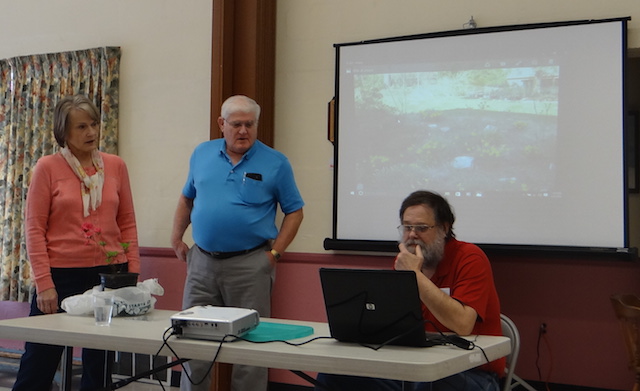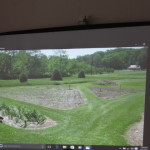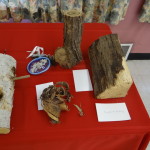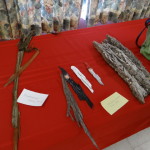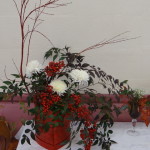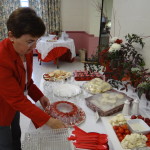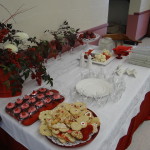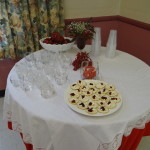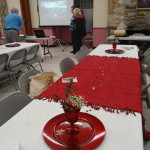[Ed.] Our February program was given by the Mason-Dixon Chapter of the Rhododendron Society who conveyed their great enthusiasm for featuring these plants in one’s yard. Sonny showed us pictures of his Howard County azalea-filled yard and followed up with the many steps taken to convert his new flat, flood-prone yard in Pennsylvania to one accepting his azalea passion. One of our members, Kelly Bollinger, belongs to this very chapter and graciously contributed the following in-depth Gardener’s Perspective…
February’s Garden Club program was presented by Sonny Coble, President of the Mason Dixon Rhododendron Society assisted by Ray Smith, Chairman of the Plant Development Committee.
Rhododendrons are members of the Ericaceae family, sometimes called the Heath or Heather family. The genus Rhododendron contains about 1,000 species, varying in height from under a foot to 100 feet and are widespread throughout the world. There are four basic types of rhododendrons: elepidote (large leaved) and lepidote (small or scaly-leaved) rhododendrons and evergreen and deciduous azaleas. In addition to the variation in plant size and form, there is a wide range of colors including white, pink, red, purple, and yellow with great variations in foliage and bloom size. Cold hardiness varies from above freezing to -35º with some being very hardy in our area and others not liking the heat and humidity of our summers.
In nature, rhododendrons appear as species when they are isolated or where they don’t readily cross pollinate for some reason. Such a selection process produces a group of plants adapted to the area in which they evolved. When taken out of their natural environment, species sometimes do not do as well.
A number of the native American deciduous azalea species make fine garden plants. Hybrids are the result of cross breeding two different species, a species and a hybrid or two hybrids. In many cases the resulting plant is more vigorous and more widely adapted than the parent plants. Seedlings grown will exhibit much more variability than seeds from a species.
Some of what I have learned since becoming a member of the society are:
- Rhododendrons and azaleas do not like to be planted deeply. Their shallow roots advance out from the plant not down into the soil below.
- All azaleas are rhododendrons but not all rhododendrons are azaleas.
- Their roots should not be circling the plant but pulled apart and placed very shallowly into the soil.
- They love pine fines (ground pine bark mulch) which feed the plant as it decomposes.
- They will be happier if planted in a “garden bed” as opposed to a hole dug specifically for a single plant.
- They easily fit into your landscape and quickly instill a desire to try other colors, forms or sizes.
- Their favorite companion plants are ferns, coneflowers and Hellebores depending on the amount and intensity of sunlight.
Currently, there are about 50 varieties growing in my garden. When I had a dozen, I knew them by name but now that I have several more, I rely on their plant ID tags. My favorite one is the one currently in bloom, as they do not bloom at the same time. In my garden some start blooming in late April while others are blooming into October.
Most member’s gardens, no all member gardens I have visited, have several pots of young plants in a holding area tucked under a tree or up close to the house, near a water source. In July, the plant development committee propagates plants that are not readily available in nearby garden centers to give members access to them and see how they fare in differing landscapes. And then, some of us collect seeds from our plants and start them in the fall under lights in the basement to see what we come up with since they are open-pollinated and you don’t know what plant the bee visited just before. I have not yet tried to pollinate specific plants to come up with a new cross. That may or may not be in my future.
***********
[Ed.]-Our horticultural assignment was to bring bark. Members brought in White Ash, Crytomeria, Hickory, Birch and other species.
Our hostesses did a wonderful job with the luncheon spread with a red and white February decor theme.
- Sonny Coble’s work in progress

